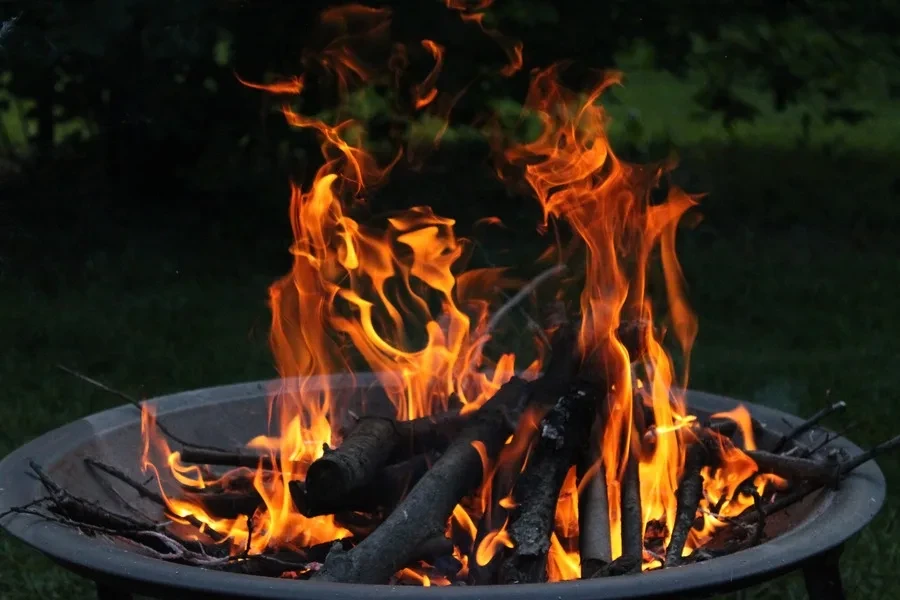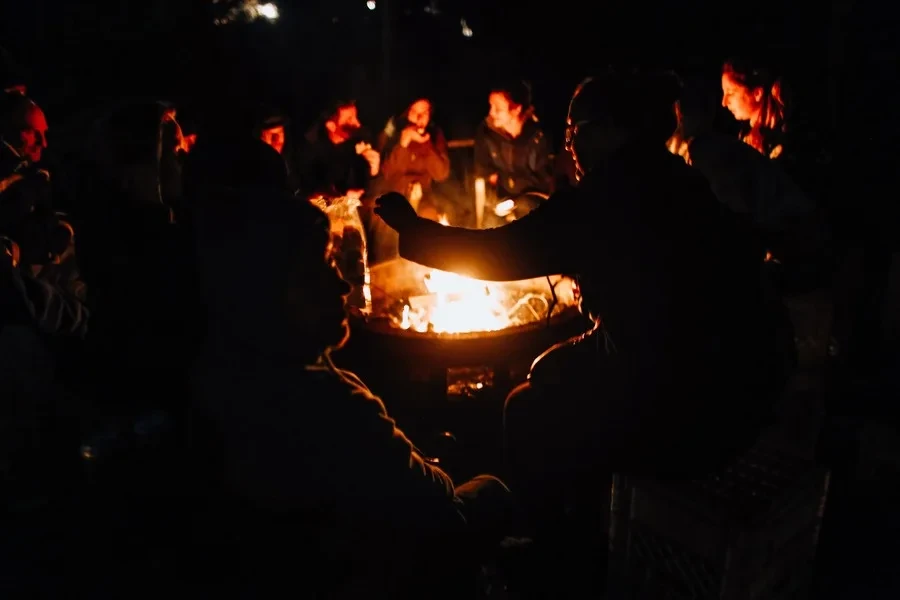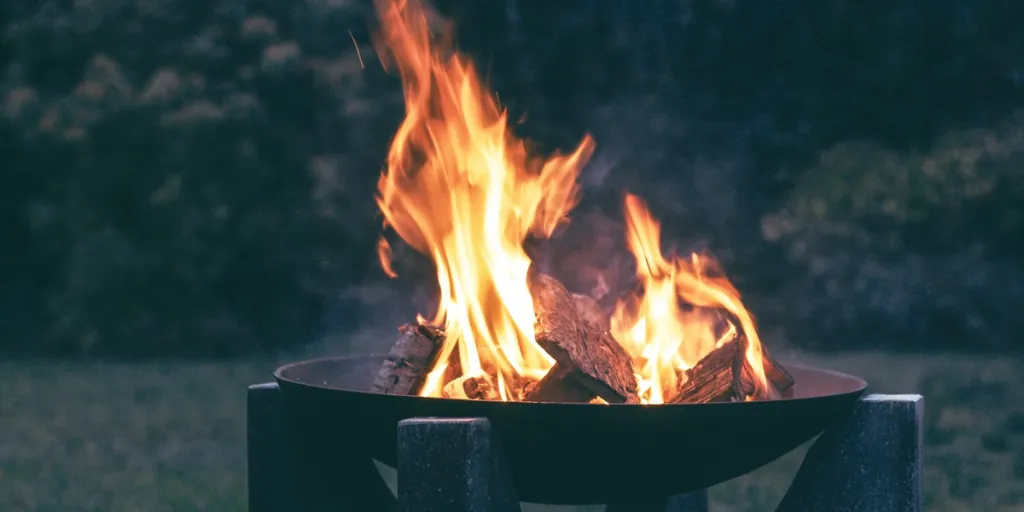Fire pits are common fire features in residential and commercial buildings. They can be found in homes, restaurants, hotel foyers, rooftops, backyards, and pool decks. Although they are primarily used as a source of warmth, comfort, and safety, fire pits also serve as design elements to elevate these spaces. Whether placed as a large bowl of fire on a high pedestal or surrounded by seating, outdoor fire pits can boost a space to grandeur.
Demand for outdoor fire pits has grown significantly in recent years, creating opportunities for businesses in this industry. For example, brothers and co-founders Jeff and Spencer Jan co-created Solo Stove in 2016, a backyard fire pit that has grown to a US$ 400 million company. The company projects to make US $320.4 million in annual revenues, with the Solo Stove product accounting for approximately 70% of these sales. Time Riegel, the founder of Mozark Fire Pit Studio, makes US$169,000 annually, selling outdoor fire pits as a side hustle. These examples show that outdoor fire pits have significant business potential that entrepreneurs and investors can exploit to build and improve their businesses.
Therefore, this blog provides insights on selling outdoor fire pits, covering areas like the global market potential, types of outdoor fire pits, and tips for sourcing them to boost business success.
Table of Contents
Outdoor fire pits market potential
Types of outdoor fire pits
Tips for sourcing outdoor fire pits
Conclusion
Outdoor fire pits market potential

Demand for outdoor fire pits continues to grow as more people engage in outdoor recreation activities. For example, in 2022, about 168.1 million Americans aged 6 and above (55% of the total population) participated in outdoor recreational activities, including camping and fishing. Consequently, these activities increase the demand for outdoor fire pits.
The global outdoor fire pits market generated US$ 194.93 million in 2022 and is projected to reach US$ 259.01 million in 2028, growing at a compound annual growth rate (CAGR) of 4.85%. There are various factors contributing to this market growth, including:
- Growing demand in hospitality industries, among homeowners, and outdoor entertainment venues looking for fire pits that enhance ambiance and functionality
- Outdoor fire pits come in different designs, sizes, and materials, thus providing versatile options to cater to diverse outdoor recreational needs.
- Increased investment in R&D has led to improvements in safety features, designs, and fuel efficiency, increasing fire pits’ popularity.
- Outdoor fire pit manufacturers continue to integrate modern innovations that enhance ignition systems, material durability, and heat distribution, making the fire pits more functional.
- Eco-friendly practices such as the use of cleaner burning fuel options and sustainable materials appeal to eco-conscious customers, thereby increasing demand.
Types of outdoor fire pits

Outdoor fire pits come in various types, providing a range of options for different end customers. Below is a list of some common types of outdoor fire pits.
Natural gas fire pits
Natural gas fire pits are fueled by natural gas connected to a gas line, which eliminates the risk of running out of gas. Most consumers consider these outdoor fire pits as a cleaner option since natural gas does not produce ash or smoke. They are also safe because they do not produce sparks or embers. The permanent connection to a natural gas line ensures that users have a consistent and controllable gas supply that can be adjusted to meet individual needs. However, this connection also makes them some of the least portable outdoor fire pits because they cannot be moved away from the gas supply.
Wood-burning fire pits

Wood-burning fire pits are comparable to campfires but with a bowl containing the fire and enhancing safety. These outdoor fire pits appeal to consumers who like the idea of open flame and enjoy the authenticity of real wood fire, including the sound of crackling embers and the smoky smell of burning wood.
Wood-burning fire pits provide intense heat, warmth, and a soothing ambiance. They are easy to set up, affordable, and allow users to cook over an open fire. However, wood-burning fire pits produce smoke, which can affect people with allergies, asthma, or other respiratory conditions. It also requires consistent monitoring and adding logs to maintain the fire and the desired warmth. Also, users must watch the fire after putting out the flames to ensure that the fire is completely extinguished.
Propane fire pits
Propane fire pits use propane gas as the fuel to produce flames and heat. The gas is stored in a portable tank connected to the fire pit through a hose and a regulator that controls gas flow to the burner assembly. Outdoor propane fire pits have single or multiple burners used to release the propane, allowing it to mix with air before igniting. A bowl is then placed on top of these burners and filled with heat-resistant coals or logs to hide the tubes and openings. This setup helps diversify the shape of the bowl and the overall fire pit.
Most propane fire pits have an automatic ignition switch used to turn the fire on. These fire pits are connected to a portable tank, allowing users to move them around their outdoor spaces. They also offer flame control, allowing them to adjust the heat. In addition, outdoor propane fire pits produce minimal ash and smoke, making them cleaner options than some types of fire pits, such as wood-burning fire pits. However, since the gas is stored in propane tanks, users will need to replace them periodically. Some propane fire pits may have limited flame sizes since the flames hugely depend on the size of the bowl.
Tips for sourcing outdoor fire pits

Businesses sourcing outdoor fire pits to sell to different end customers must consider various features to ensure their products align with market demands and customer expectations.
Choice of materials
Various materials are used to construct fire pits, from concrete to cast iron, stainless steel, slate, and copper. Each of these materials is used to create outdoor fire pits with distinct styles and designs, thereby creating a different atmosphere and overall aesthetics. Therefore, businesses should provide outdoor fire pits constructed from a range of quality, long-lasting materials to cater to different customer preferences and needs. In addition, the materials chosen should prioritize durability, versatility, and aesthetics.
Safety features
Safety is a major concern for customers using outdoor fire pits in both residential and commercial settings. Therefore, businesses should prioritize fire pits with robust safety features, such as heat-resistant materials, flame sensors, or automatic shut-off systems.
Compliance with regulations
Some regions have safety and environmental regulations that provide guidelines on the type of fire pits allowed in specific areas. For example, in the case of natural gas fire pits, users may be required to seek permits before installing new gas lines. In addition, the fire pits sourced should meet the industry standards to ensure they are safe for use and reduce legal risks for the business. The National Association of Realtors indicates that outdoor fire pits should be placed at least 10 feet (25 feet in some counties) from the property line and should be away from flammable landscaping elements or low-hanging branches.
Type of fuel
Various fuels from natural gas, gel, propane, and wood are used to power outdoor fire pits. Considering the target market’s specific preferences and practicalities can help elevate business success. For example, customers going camping or fishing may prefer wood-burning fire pits, while those designing their backyards can opt for gas-powered fire pits. Therefore, brands should have a diversified inventory to fulfill different customer orders based on their interests.
Conclusion
Recent years have seen an increase in the number of people participating in outdoor recreational activities. This shift has resulted in demand for some items that enhance people’s ability to enjoy these outdoor activities, including fire pits. Some common types of fire pits experiencing increased market growth are wood-burning fire pits, propane-fueled fire pits, and natural gas fire pits.
The increased global demand for these outdoor fire pits has created opportunities for businesses in this industry to boost their revenues and performance. However, for businesses to leverage these opportunities, they must pay attention to various aspects. For instance, they should stock fire pits made from durable and versatile materials, be powered using customers’ preferred fuels, have appropriate safety features, and comply with relevant regulations and market standards.




